Revisiting Atropos
Returnal delivers with Housmarque’s free Ascension DLC
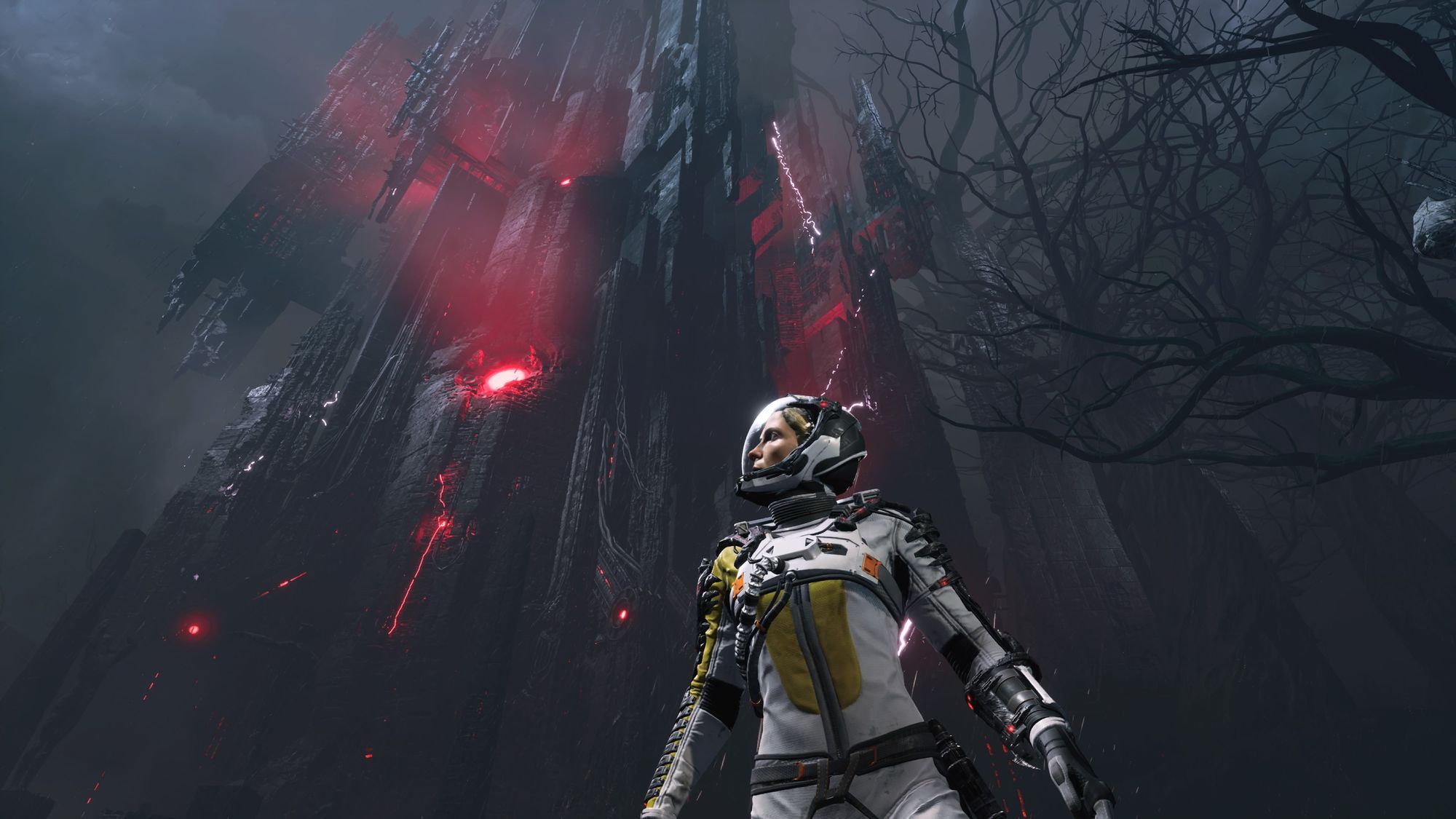
After playing hours upon hours of Returnal’s hand cramping bullet hell, I never thought I’d return to the haunting alien world of Atropos. I had completed the game, discovered every ruin, endured Selene’s flashbacks, listened to every log, and conquered Phrike, Ixion, Nemesis, Ophion, Hyperion, and Nemesis… multiple times. But I couldn’t pass up checking out the new features of Ascension along with the additional narrative.
Housemarque’s Ascension DLC has added photo mode, main story co-op, and The Tower of Sisyphus, an endless climb that will undoubtedly end in failure. Housemarque has also added to the lore of Selene’s story, which balances out the fast-paced combat as she slips into a dream setting and explores pieces of her broken memories.
Co-op Mode
Whether you find the barren tundra of the Fractured Wastes a bit lonely, or the desolate depths of the Abyssal Scar overly punishing, co-op is worth investigating. At the beginning of every sub-area, a glowing orb called Chronosis awaits interaction, cloning another version of Selene. Here you can host a private cycle co-op with a friend or join a public session.
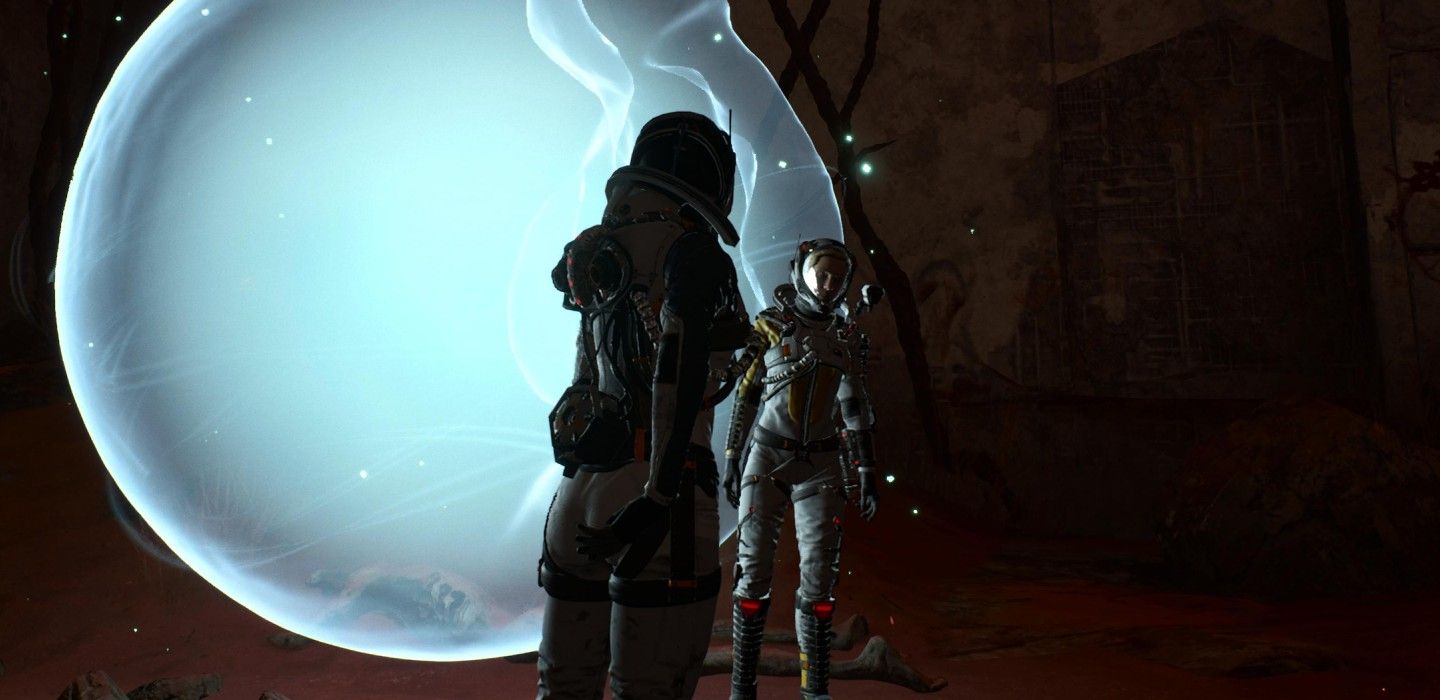
I found communication to be key with Returnal’s co-op because consumables, weapons, and obolites are not shared, with the exception of weapon calibrators at the beginning of a new sub-area. Dividing loot can be frustrating, especially if you prefer a certain gun or if you’re running low on health and the other player picks it up.
As a person who hates to be mic’d up, a glitch finally forced me to unmute my mic as I fell through the floor at Nemesis’ platformed boss fight. I apologized profusely, and we prevailed. I’ve found the Returnal community to be very helpful, fair, and welcoming.
The second thing to note is tethering. The game keeps co-op players within the same room. Venturing too far will ‘tether’ or warp the players back together. This is helpful to keep in mind when a bonus room shows up.
Don’t expect co-op to make this roguelike bullet hell easy though. If a player is downed, reviving takes time, making it difficult to pull off a revive during a boss fight. The bosses still take a significant amount of time and skill, and your co-op may fail if you passed up on the many rooms to upgrade properly.
Tower of Sisyphus
Akin to the Greek tale of Sisyphus, Selene will battle and toil and endlessly climb, with inevitable failure the only possible ending. The tower is divided into phases, each phase containing 20 floors. On floor 20 of each phase, Selene faces the formidable boss, Algos. This towering tentacled deformity represents so much more; dominated by an all-seeing eye, punishing Selene again and again. Always watching and devouring, never relenting or forgiving.
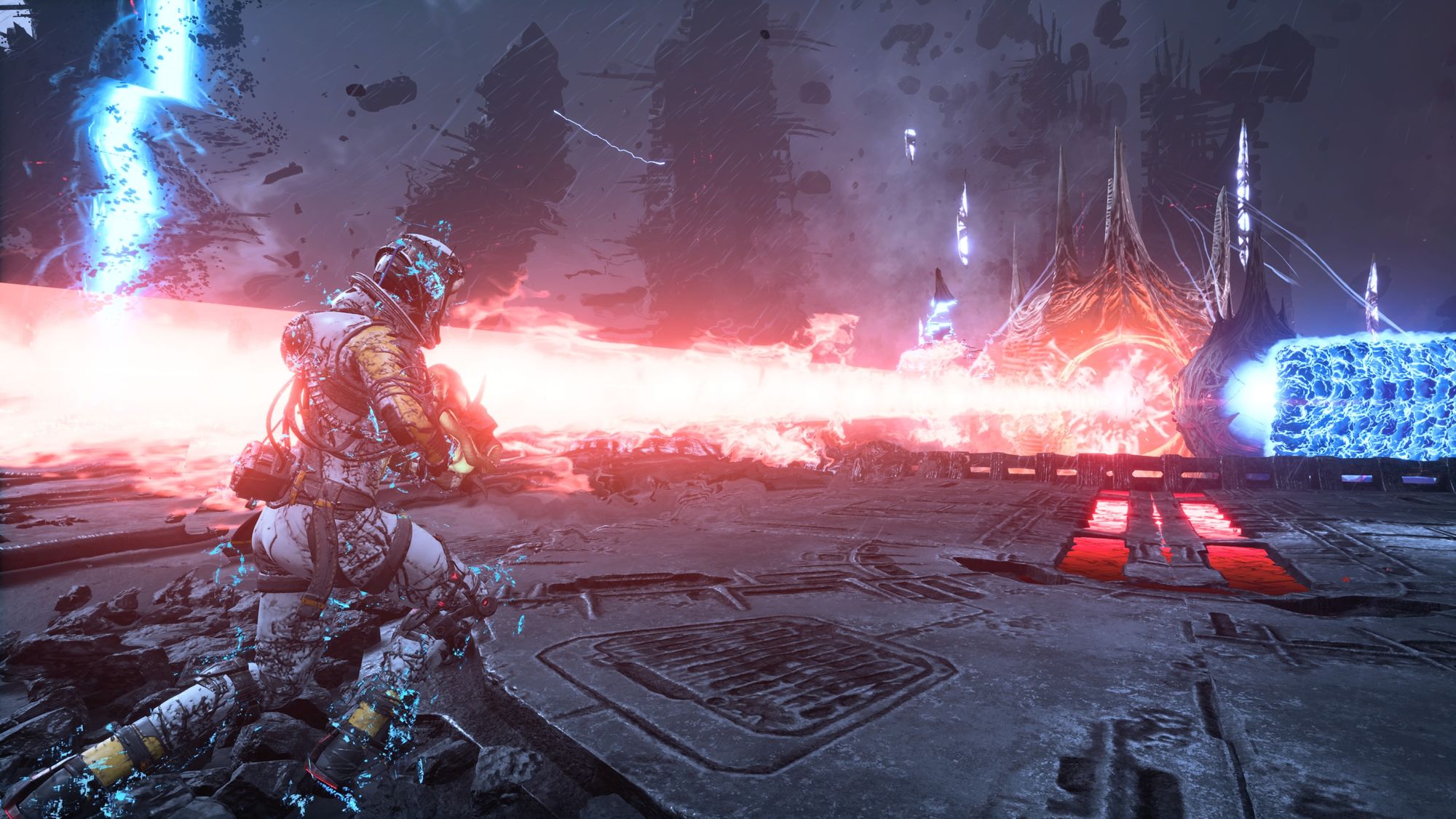
I found The Tower of Sisyphus to be utterly addicting. Adrenaline builds as Selene climbs higher, my palms sweating, heart racing, eyes darting to the mini-map to catch my bearings on the floor’s layout. Even Selene’s demoralizing scream as she’s inevitably cut down by the alien inhabitants doesn’t keep me from trying again.
I’ve made many runs up the tower at this point and was feeling pretty proud of my 2 million score. That was until I compared my score to the leaderboard, to find others have scored in the hundreds of millions.
But I do have some observations and tips. In the right upper corner of the screen, there is a scorecard. You’ll see a number labeled ‘multiplier’, similar to the daily challenge. This multiplier builds based on how quickly you take out enemies without sustaining damage and will run down on a timer once the room is clear. In The Tower of Sisyphus, if you want to score big numbers, you need to be fast. This takes strategy and skill. First off, don’t get hit and clear enemies as fast as possible. Second, pick up your consumables while there are still enemies alive. If you save items until the end, your multiplier will completely run out, and you’ll find your score multiplied by... well, 1.
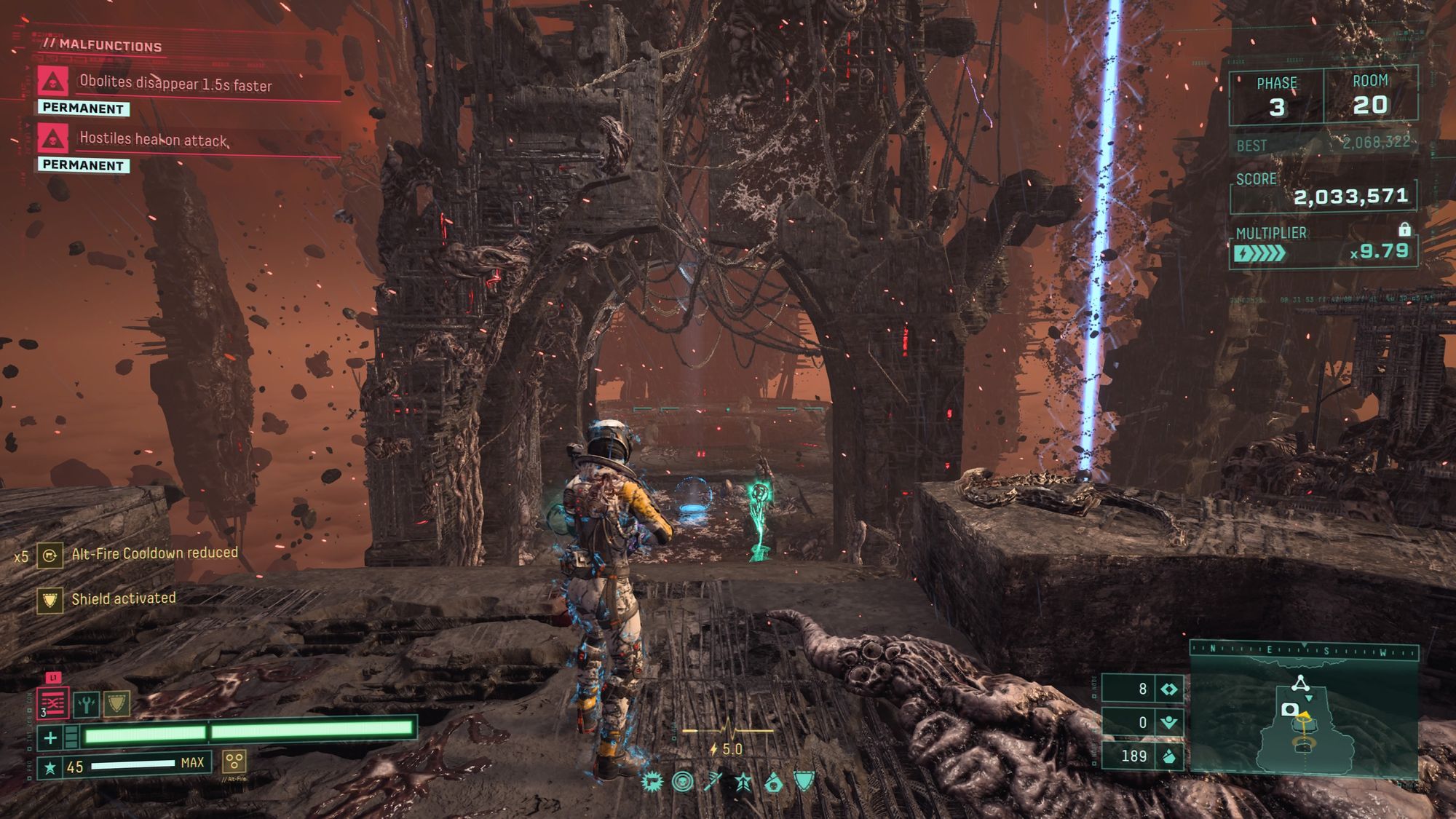
The Tower of Sisyphus leans heavily on rewards in the early climb. Selene will find many bonus floors with nothing but fresh guns, obolites, calibrators, artifacts, and resin. Expect your health bar to almost be doubled by the second phase, and maxing out your gun calibrator by phase three. She will find many consumables which you may want to save until late phase 2 or 3. You may also find new devastating weapons. The enemies get progressively harder, and you’ll see some familiar formidable foes, such as Severed and impossible to dash through purple energy waves.
Oh and did I mention? Don’t get hit. Keep moving. Much like the main story, Returnal is utterly punishing if you stand still or take too long to aim. The more enemies Selene eliminates without being hit, the more adrenaline builds which rewards with power and obolites. It’s not easy, but with constant movement, grappling hooks, and elevation changes, you can stay out of harm's way. Keep your finger on the trigger and hope you find a gun that suits your play style.
Selene’s Story
Ascension DLC is perfectly balanced in my opinion. After a tough run up the tower, Selene will return to the main area containing a modified computer console where you can check your score, read story relics, and enter an area containing Selene’s haunting dreamlike memories.
Much like the farmhouse in the main game, there is an explorable area where the story expands, adding more depth and mystery to her shattered past. I wondered to myself what was real. If Selene is stuck in hell or purgatory, or if she truly believes her adversity will free her, or even if she deserves this punishment. The intergenerational trauma creeps into every log and relic, the environment’s small details changing with every visit. The symbolism and foreshadowing subtly transform every visit, and she will find a key item that will make its way into The Tower of Sisyphus.
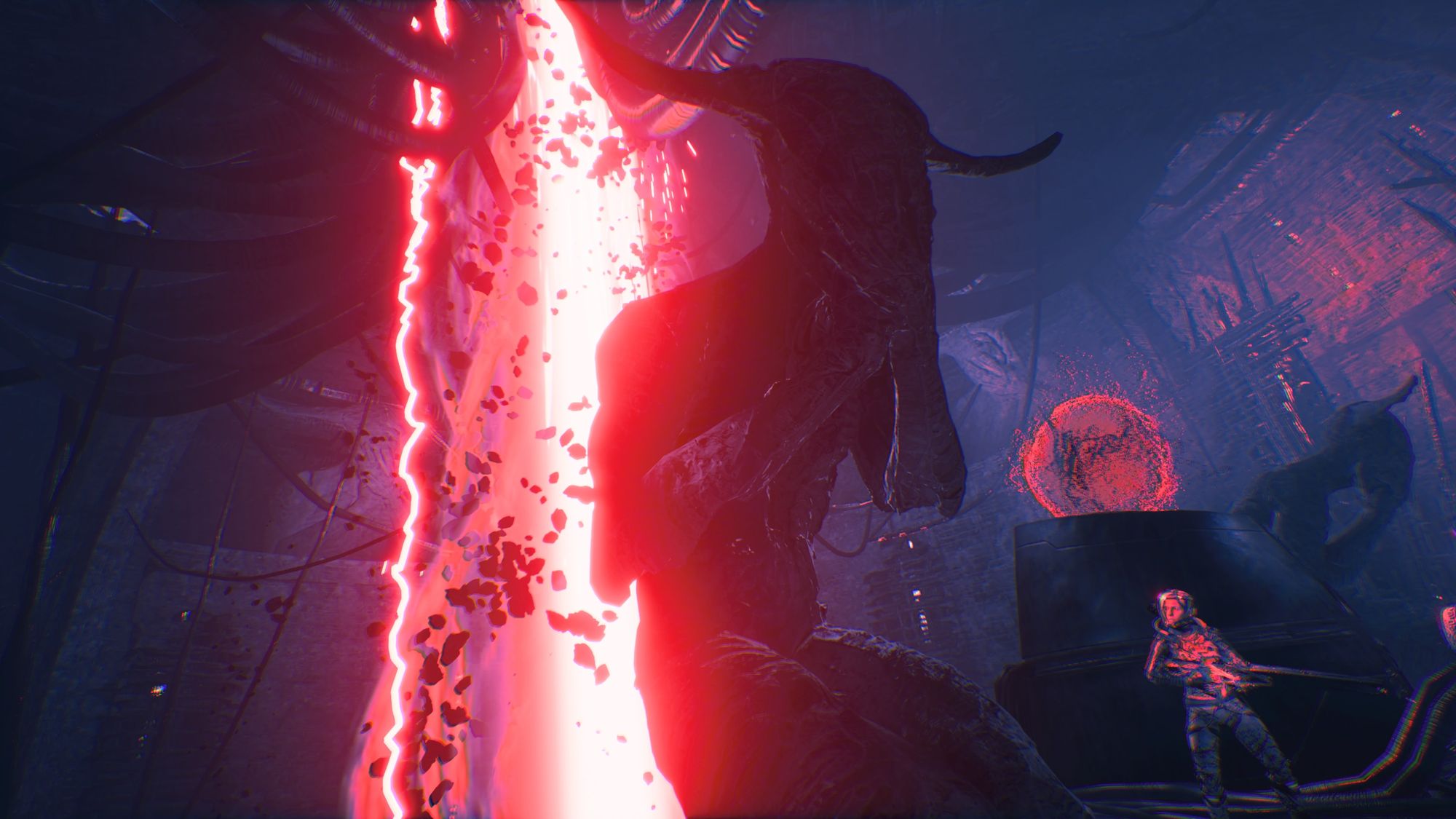
In order to unveil the story, the game rewards you not only for progression but for failure. Each time Selene ascends, she may find an item that will progress the story, and in order to revisit her dream, she must die… again and again. It took me a good 15–20 runs in order to finish the storyline.
I felt the Tower of Sisyphus narrative clarified many elements in the main story game, but also left many unanswered questions. We uncover small fragments of her past, piecing them together on an impossibly large canvas to understand Selene’s mental torment. Her own suffering is undeniable, lashing anger outward at a life lived unworthy and unloved, suffocated and stifled by the goddess who bore her. Perhaps it is why the Theia of the bright blue sky shines with life at the rise of the sun, Helios, and fades with silence, fear, and darkness with the moon, Selene.
Greek mythology is intertwined with every aspect of Returnal, and I found the story of Selene’s past and the eternal loop on Atropos easier to piece together once I brushed up on my Greek mythology. I suggest doing the same if you are to make sense of the story.
As someone who rarely returns to a game for DLC, I would enthusiastically recommend coming back to Ascension, for re-playability, depth of narrative, and an exceptional co-op experience.
